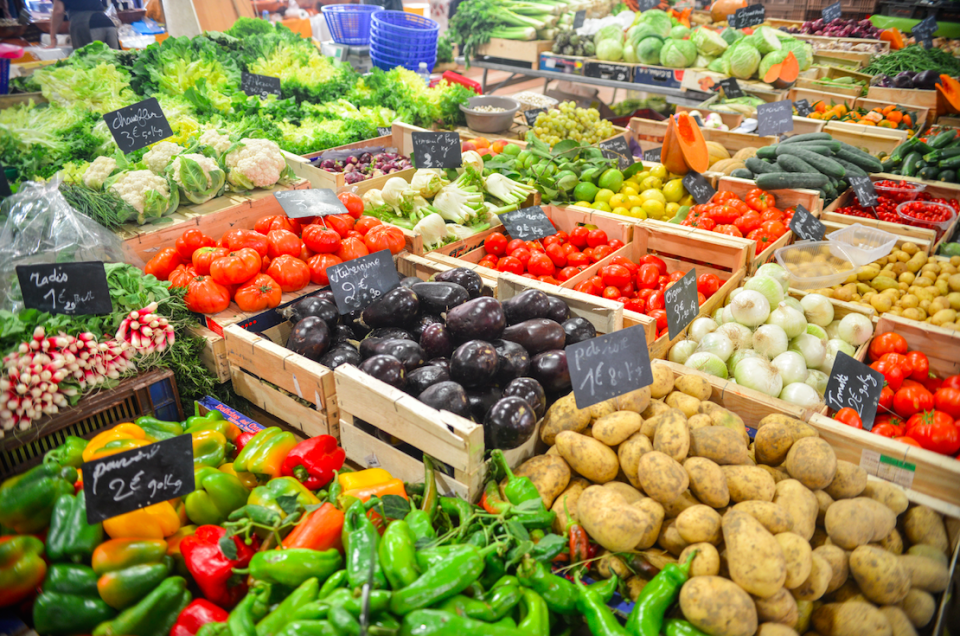7 Ways To Tell If You Really Do Have A Food Intolerance

Do you really have a food intolerance? [Photo: kaboompics.com via Pexels]
#nocarb #glutenfree #wheatfree #nodairy #dairyfree. These days if an Insta hashtag doesn’t contain a ‘free’ or ‘no’ it isn’t worth it’s weight in heart emojis.
Bloated tummy? You must be wheat intolerant. Feeling nauseous? Time to go gluten free. More people than ever before seem convinced they have a food intolerance – but with so many possible symptoms, triggers and outcomes, are your dietary choices really to blame?
Whether you want a flatter tum, clearer skin, or a calmer gut the message seems to be that cutting out foods containing gluten, wheat, dairy or sugar is the way to go. But is culling an entire food group from your diet really necessary?
According to the Food Standards Agency, the gluten-free industry alone is worth a staggering £238 million and one in five of us regularly buys gluten-free. Yet only one in 100 has a true allergy to gluten.
So before you jump on a free-from bandwagon read our expert guide to working out if your guts really can’t tolerate gluten or if you’ve merely fallen out of love with lactose…
Food intolerance or fussy eater?
Nowadays planning a dinner party to cater for your pals various dietary needs is such an organisational nightmare it would give Deliciously Ella a headache. But do we all really have an actual intolerance or is it just a case of being fussy?
“Data on true food intolerance prevalence is poor, but The British Dietetic Association (BDA) estimate that between 1-10% of adults have a true food allergy, and up to 20% have symptoms that could be attributed to being food related,” explains James Collier, Registered Nutritionist & Co-Founder of Huel.com

Bloated? Time to go dairy-free? [Photo: Rex Features]
Spot the signs
“The symptoms of food intolerance usually affect the gut and might include abdominal cramps, bloating, wind and diarrhoea,” explains Dr Lauri-Ann Van der Poel, Paediatrician and Allergist at St Thomas’ Hospital and allergy expert for FoodMaestro, a personalised app that helps find the right foods for intolerance and allergy sufferers. “Non-gut symptoms may be neurological, such as headaches, general malaise, tiredness and poor concentration. Less commonly but not unusual, are aching joints and skin rashes which are typically non-itchy, as compared with allergic rashes.”
“Feeling generally unwell is also a symptom and can a lot of the time be ignored,” adds Caroline Oldham, founder of Biteappy.com, a worldwide directory for allergy friendly restaurants..
Start a food diary
Experts recommend an exclusion plan to learn about food triggers. “Keeping a food diary alongside a food exclusion plan for a month is a good way to determine whether you have a food intolerance,” explains Caroline.
“Try following a strict diet for a month and then reintroducing these foods one by one with a gap of 3-4 days between each one to help determine if you have a food intolerance,” she continues.
But seek advice from your GP or registered nutritionist before beginning an exclusion diet. “An exclusion diet is the best way to really work out what is causing your problem but it’s not easy and should be done with the help of a GP or dietician,” explains allergy expert Rachael Dunseath
Founder Myroo Skincare, the UK’s first totally free from skincare brand. “Just ruling out food groups without advice can be harmful. Some groups are not easily identifiable either, such as the nightshade family which contains both potatoes and aubergines.”

[Photo: stokpic.com via Pexels]
Intolerance Vs allergy: Know the difference
“A food allergy is a potentially serious immune response to eating certain foods,” explains Dr Lauri-Ann Van der Poel, “These reactions usually occur within minutes to half an hour of eating the culprit food and can cause vomiting, rashes - especially ‘hives’ or urticaria, swelling and, potentially difficulty in swallowing, breathing and a change in level of consciousness.”
What about intolerances? “A food intolerance is an adverse reaction to food that does not involve the immune system and is not life-threatening,” continues Dr Van der Poel. “This may be due to an enzyme deficiency such as Lactose intolerante, which is due to lactase deficiency, resulting in difficulty in digesting milk sugar (lactose). Others can be pharmacological or a form of chemical reaction in the body, such as to sulphites, salicylates, histamine or caffeine.”
Those with allergies should seek medical help straight away, but if you have an intolerance, you could experience problems for several days after consuming the trigger food. This is part of what makes intolerance so difficult to diagnose.
Take a (reputable) test
If you’ve seen your GP and you’re still in the dark, you can take an independent test, but don’t be fooled into taking one that’s not actually as accurate as it seems. “There are a number of laboratories that claim to test for food intolerance. However, be wary of these are many are based on pseudoscience and are not credible,” explains James.
Rick Hay, Anti Ageing Food and Fitness Nutritionist: The Super Foodist recommends YorkTest, which uses a simple pin-prick blood test to help to figure out your triggers, as well as offering advice and support from nutritionists. For more information on other reputable tests visit BDA and Food Intolerance Testing UK

[Photo: Rex Features]
Don’t self diagnose
Step away from Dr Google. “This is one where self-diagnosis is not a good idea,” explains Faith Toogood, leading dietician and expert at health, fitness and wellbeing site MakeYourSwitch “If you’re concerned that you might have a food intolerance or allergy then see your GP and get referred to a registered dietician who will be able to help you. This might involve exclusion or elimination diets that they will safely guide you through! And whatever you do - don’t fall for DIY testing kits!"
Bust the myths
“A myth is that Coeliac Disease is classed by some as a food allergy and intolerance, this is not the case, Coeliacs Disease is an autoimmune disease where by consuming gluten causes the lining of the small intestine to become damaged,” explains Caroline from Biteappy.
Many of us also fall into the trap of thinking gluten free automatically = healthy “Although there is much greater awareness and diagnosis of allergies and intolerances today, there is an equal share of people avoiding gluten as part of a general healthy lifestyle as there are those avoiding it because of allergy or intolerance,” says Sue Warren, Strategic Development Director at Wellaby’s (gluten-free snacks). “This is interesting because people associate a gluten free diet with being more healthy, which is not always the case.”
Share your food intolerances @YahooStyleUK
For more information on food intolerance, pay a visit to Allergy UK’s website.
5 Signs You Could Have A Food Intolerance
You Should Eat Dinner No Later Than 7pm, Doctors Warn - Here’s Why


